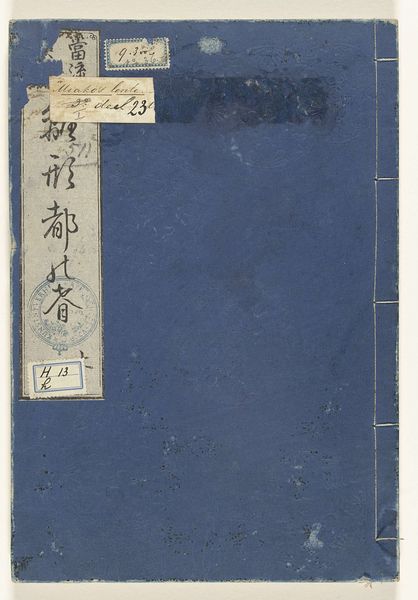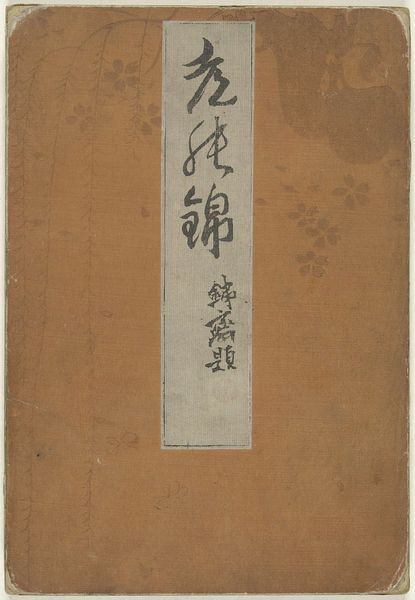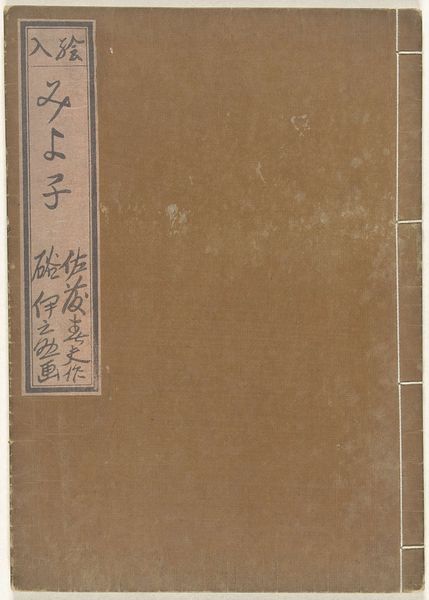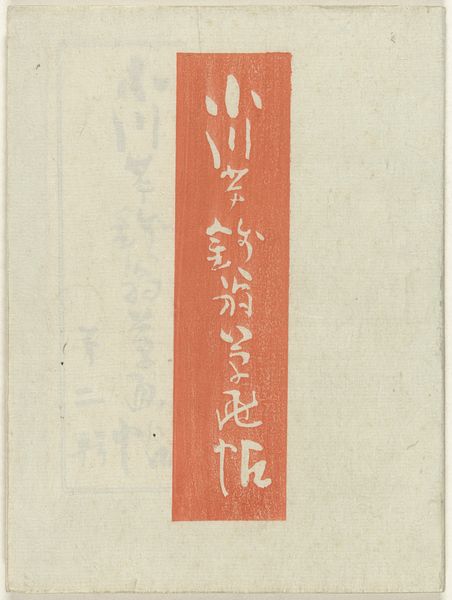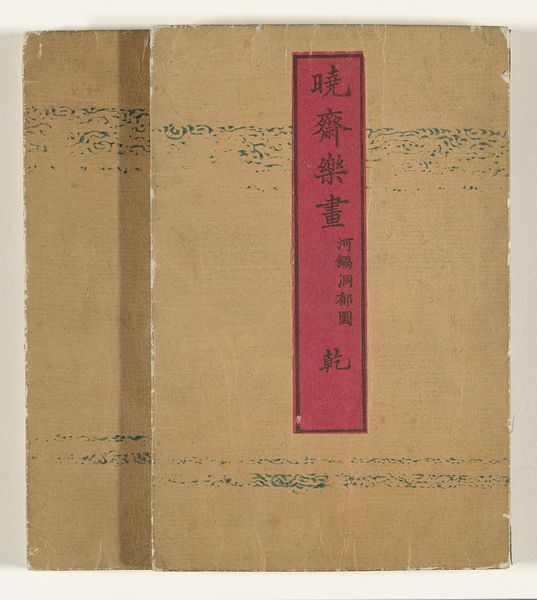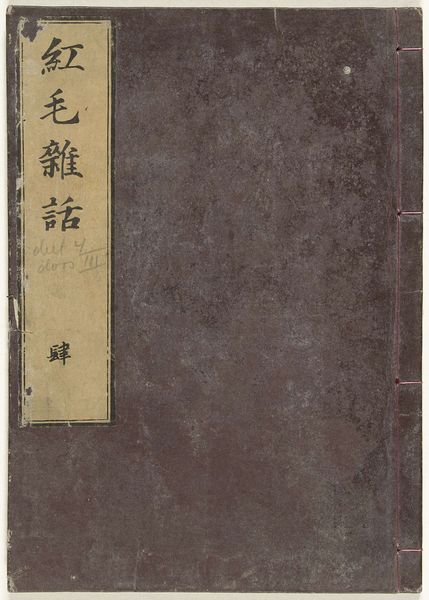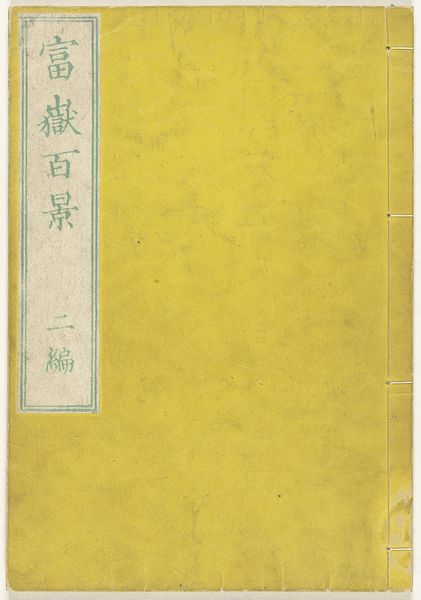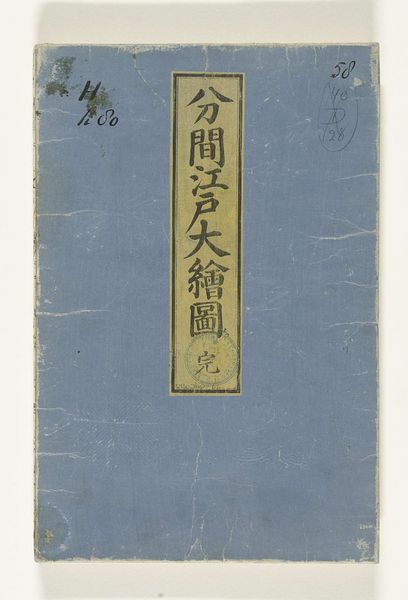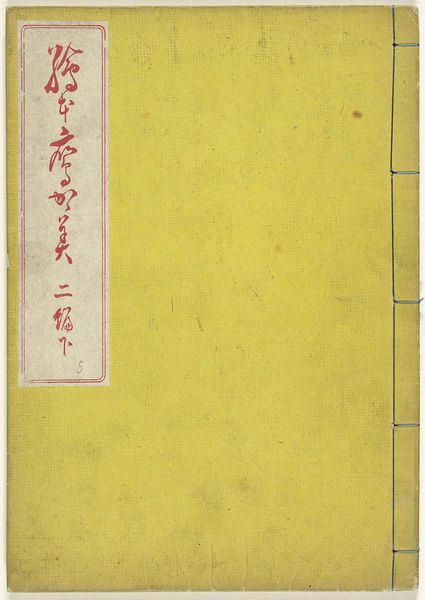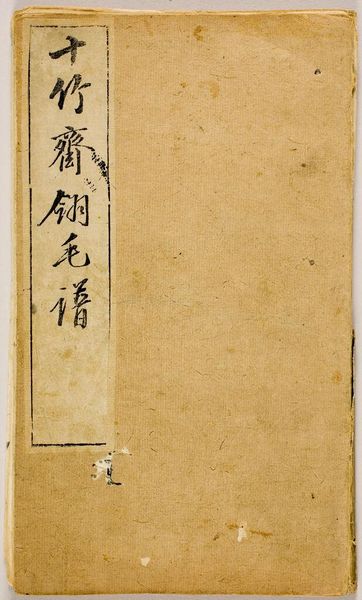
collage, print, textile, paper
#
collage
# print
#
asian-art
#
textile
#
paper
#
coloured pencil
#
calligraphy
Dimensions: height 248 mm, width 181 mm
Copyright: Rijks Museum: Open Domain
Curator: Welcome. We are standing before "Moderne gebruiken vergeleken in vijftig verzen, deel één," a striking print and collage work by Asai Chû, dating back to 1907. It's currently housed here at the Rijksmuseum. What are your first thoughts? Editor: Hmm, austere almost. The pale ochre backdrop, coupled with what looks like elegantly penned calligraphy. There’s a distinct feeling of aged paper and quiet contemplation. Makes me think of old scrolls tucked away in a dusty library. Curator: The use of collage and textile elements adds another layer of intrigue, wouldn't you agree? It highlights the intersection of traditional artistic practices with a developing modern aesthetic in Japan at the time. Editor: Absolutely! I see it as a cultural tapestry, each element carefully chosen. I wonder what the "modern uses" in the title are alluding to, and why express this through 'fifty verses?' The text gives a narrative layer—are they social commentaries perhaps? Curator: Indeed! The work acts as social commentary wrapped in tradition. By using collage, Chû disrupts traditional visual narratives and juxtaposes elements of the old and new worlds to address a society in flux. It provokes discussion about modernisation’s effects on cultural identity and everyday life. Editor: So it’s not just pretty calligraphy, then. It’s a gentle rebel yell! Knowing that it's a print makes it more fascinating. Prints allowed the messages, like these visual commentaries, to be shared among a bigger segment of the population than maybe painting would. This means its purpose might've been very political. Curator: Precisely! The artist makes very thoughtful considerations of their medium in the distribution of meaning. With this print, the work becomes inherently political. Its existence signifies a cultural reckoning through accessible, distributable art. Editor: Thinking about its age and the obvious delicate materials, seeing it preserved here makes me thankful for institutions like this, truly! Preserving not just the art, but these conversations with our past. Curator: Absolutely. And as we consider this piece, what began as material analysis has blossomed into an appreciation for how art reflects and shapes society. That is no small feat. Editor: Definitely makes me eager to explore how these "modern uses" compare to ours a century later. It shows me that we can find little anchors from then to now to help ourselves float. Thanks for sharing your wisdom!
Comments
No comments
Be the first to comment and join the conversation on the ultimate creative platform.
